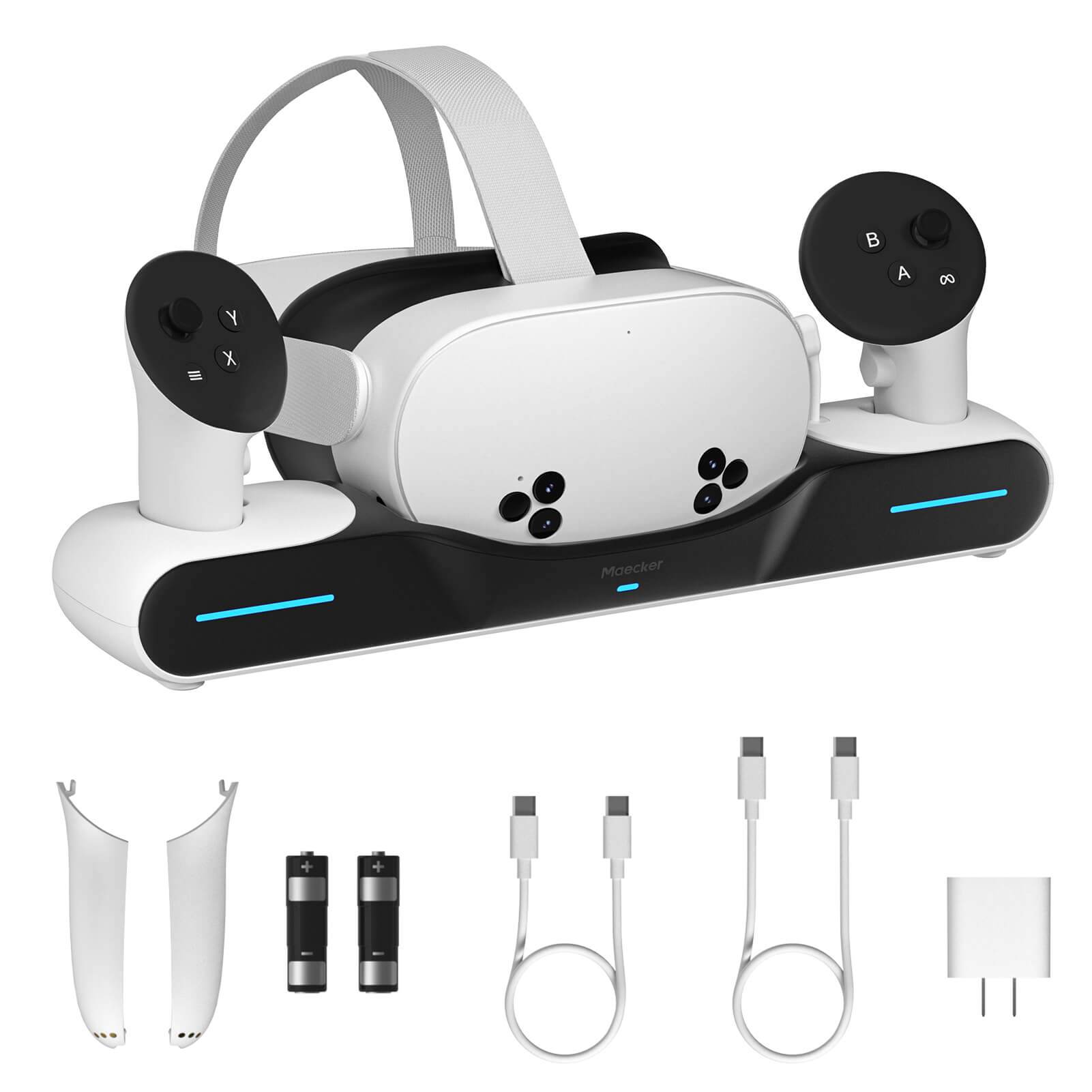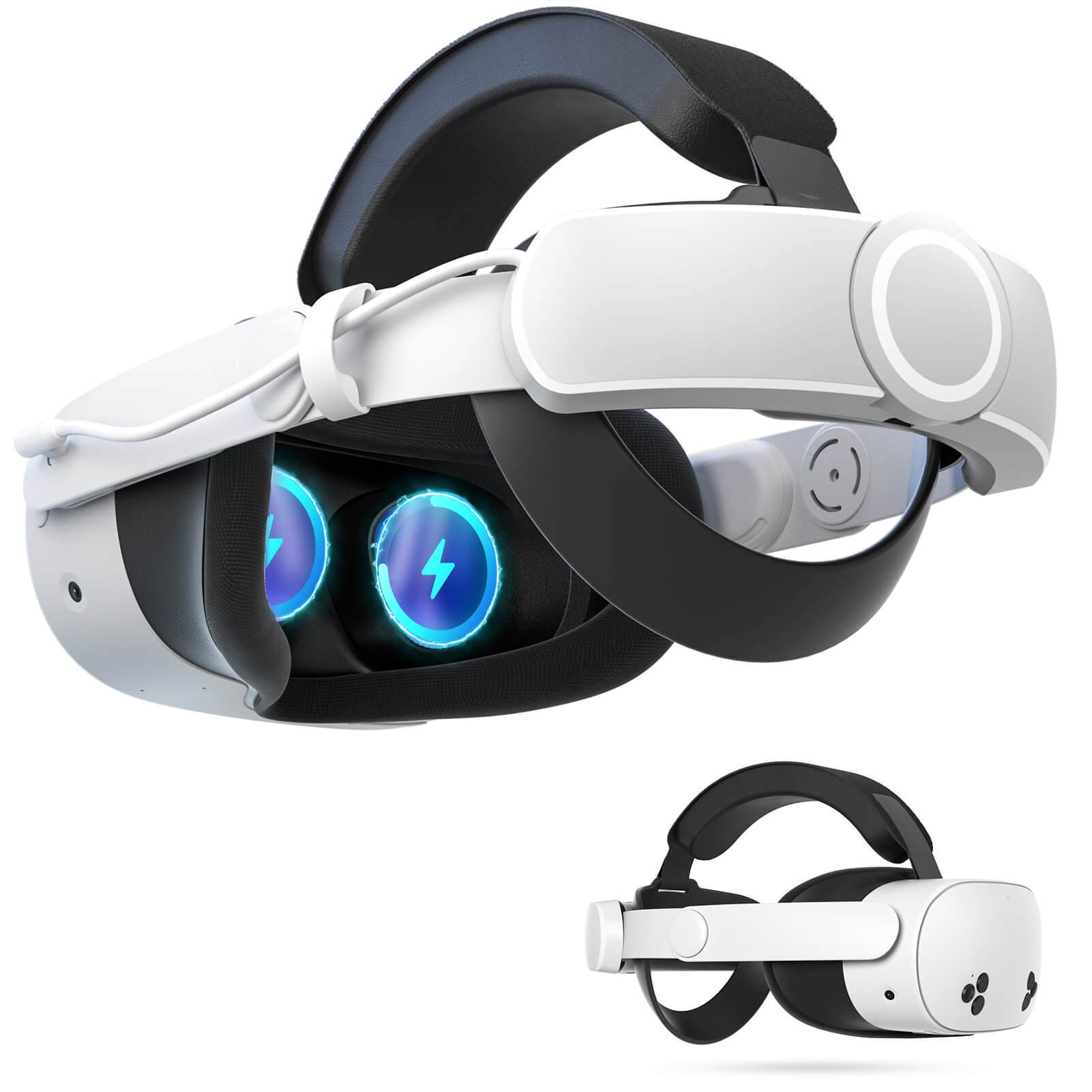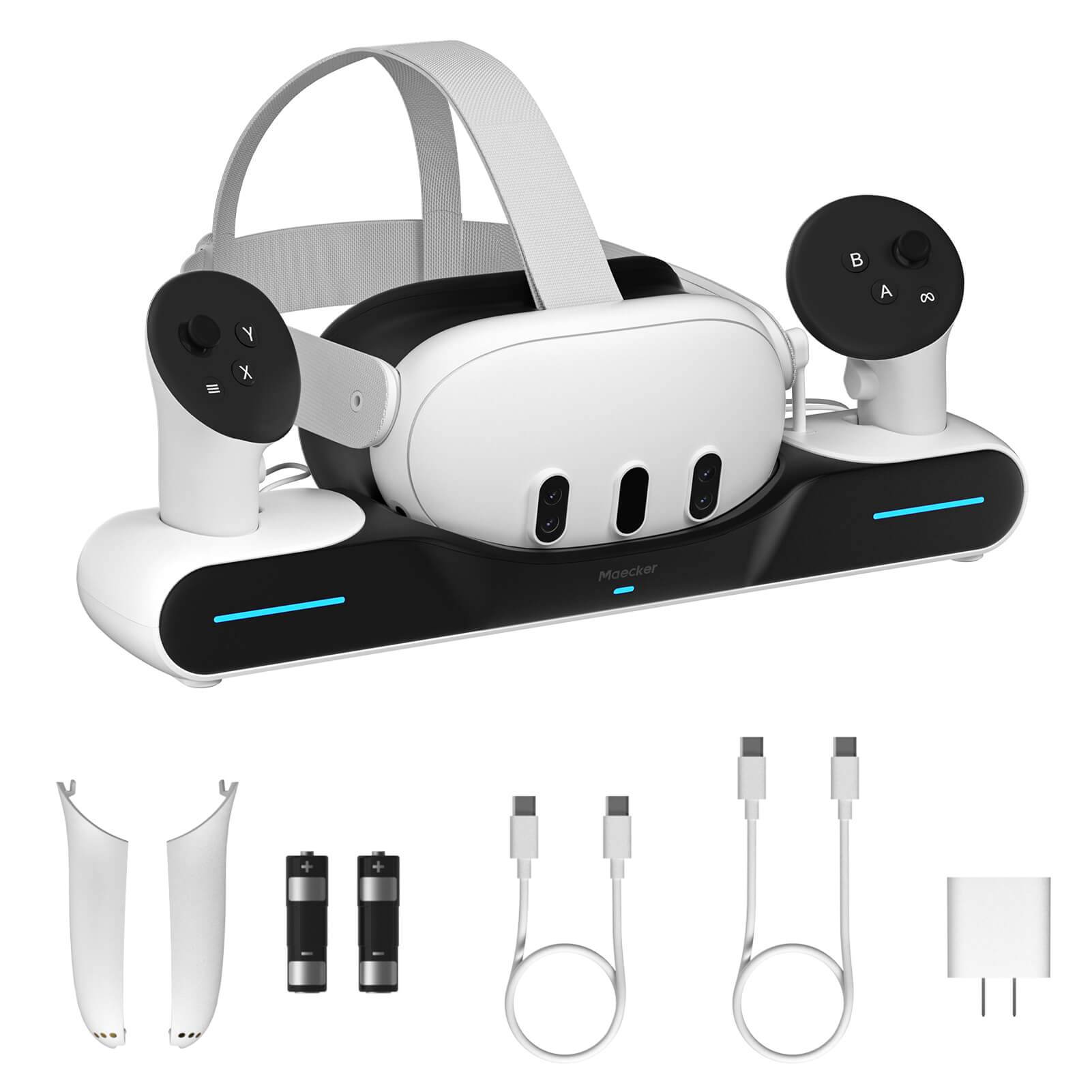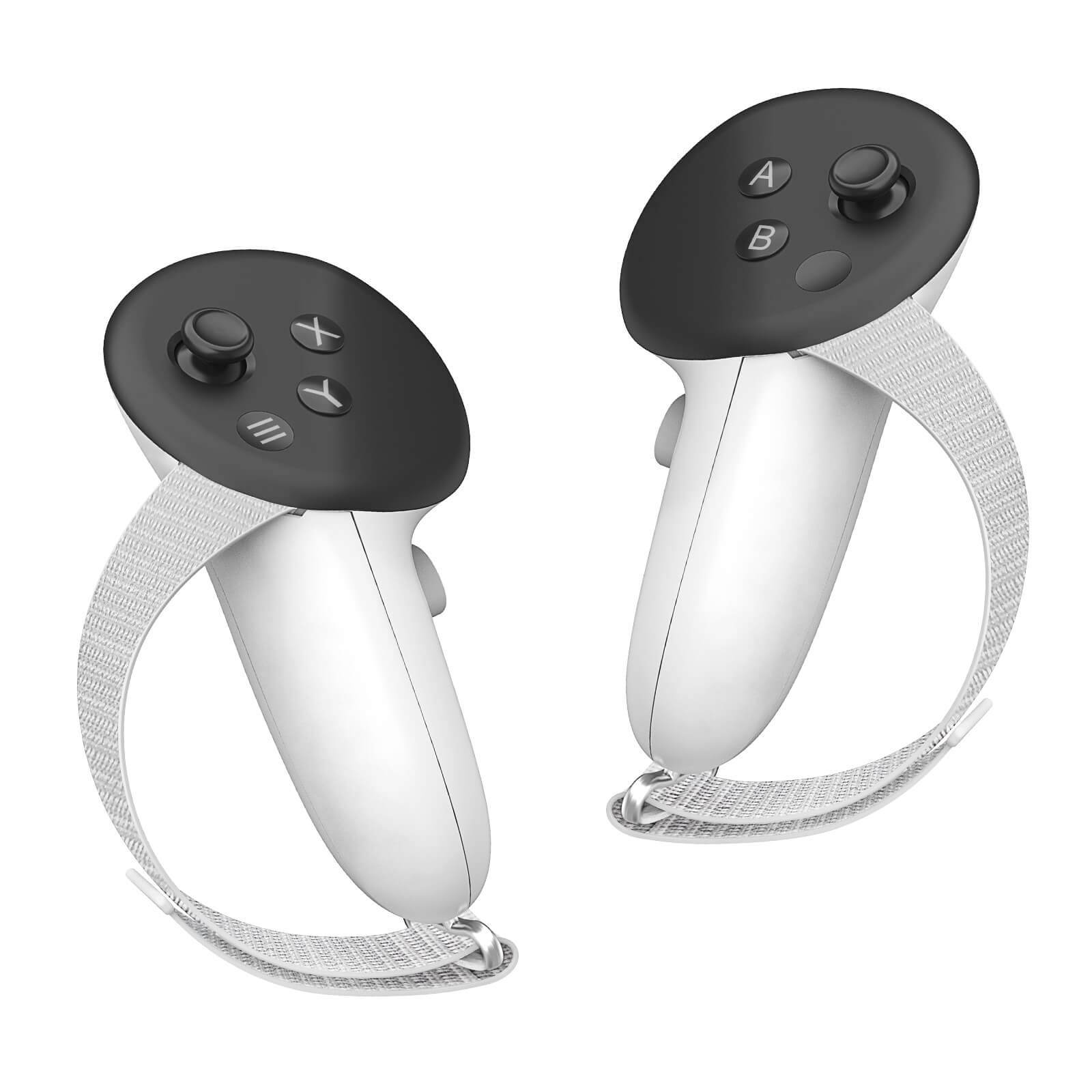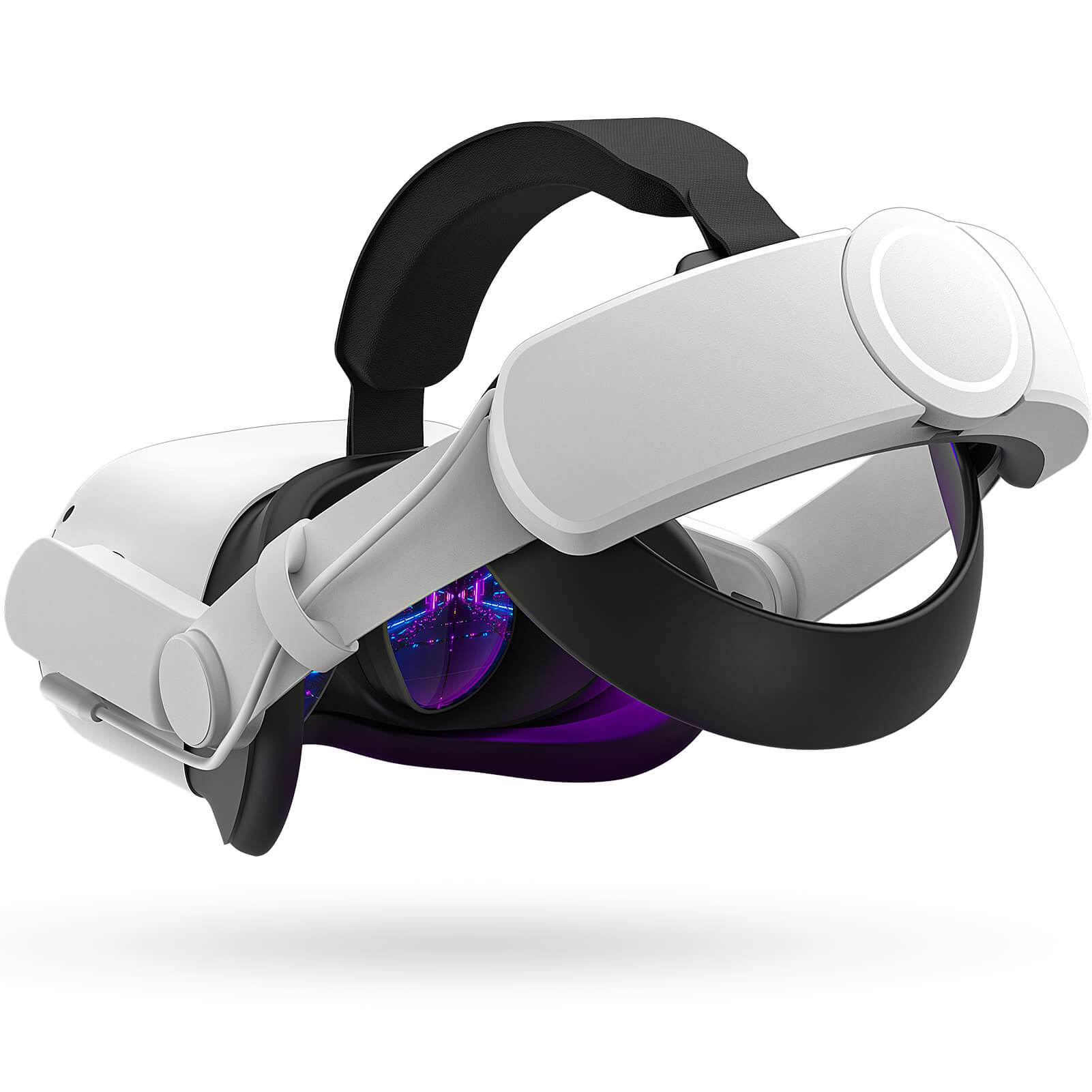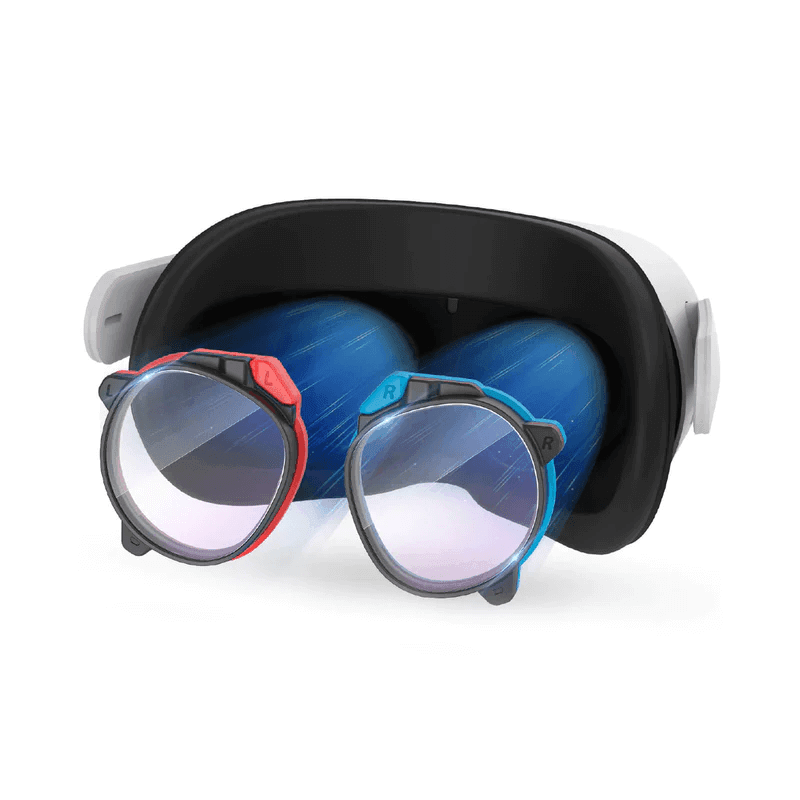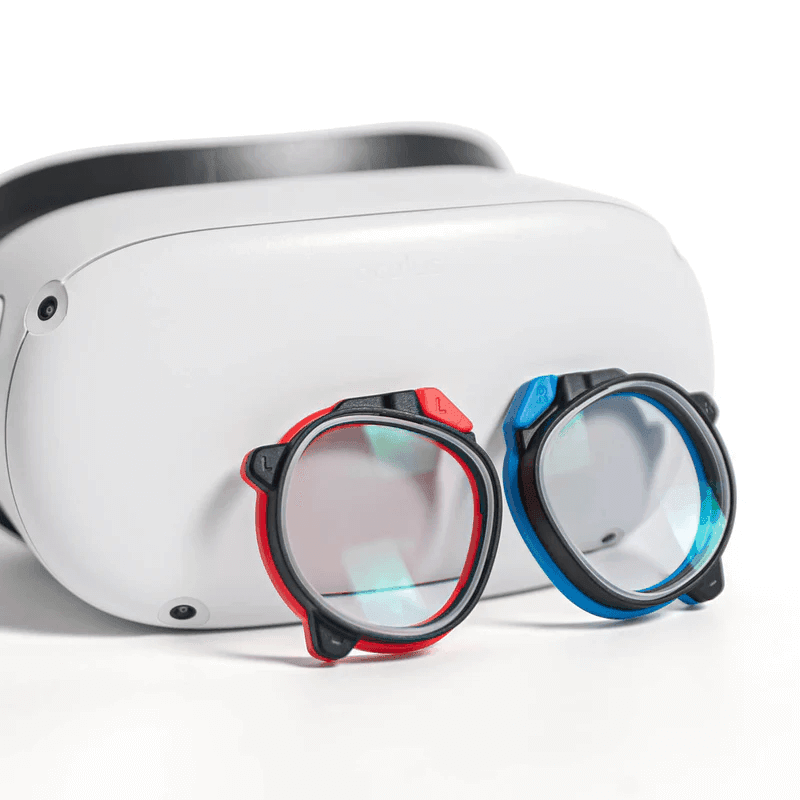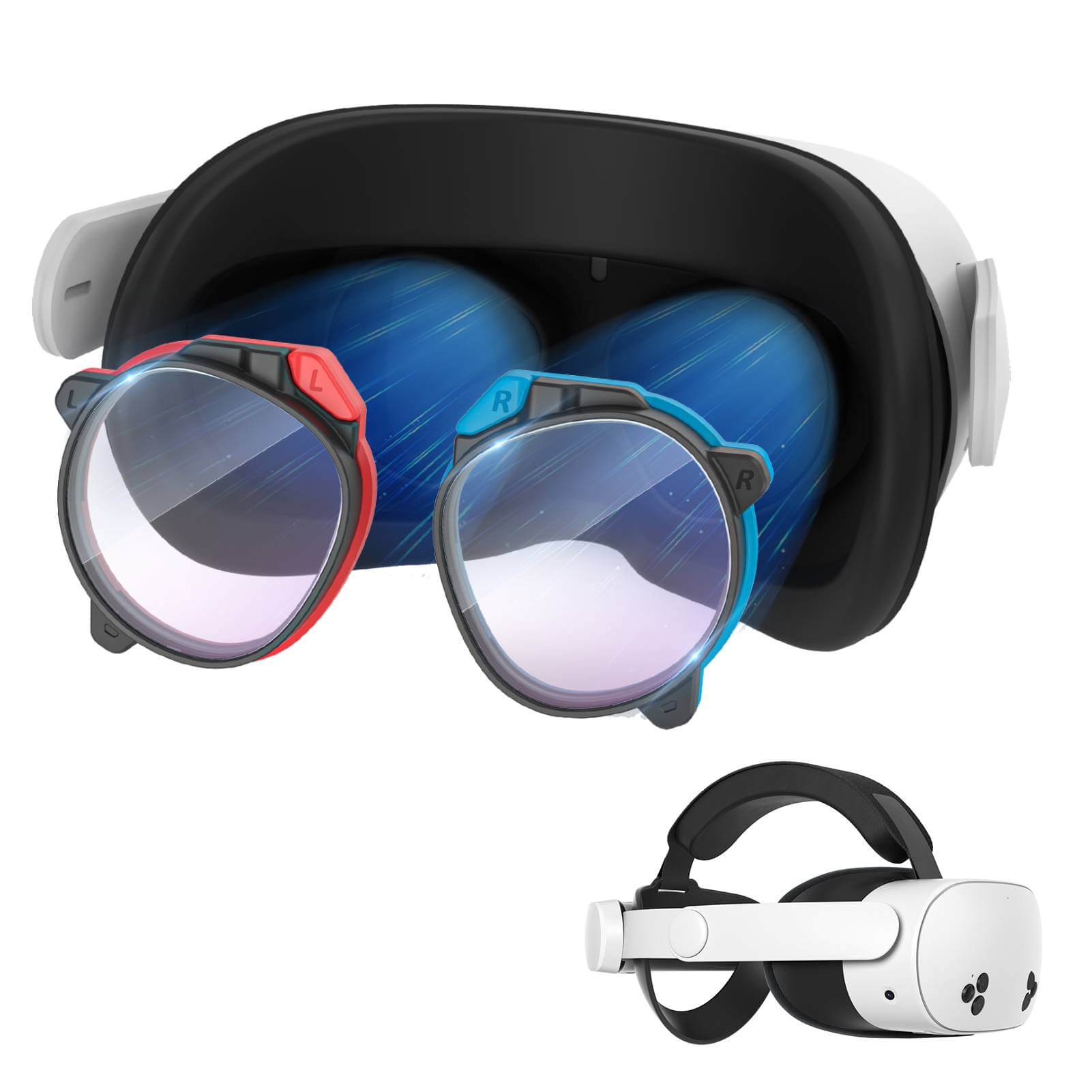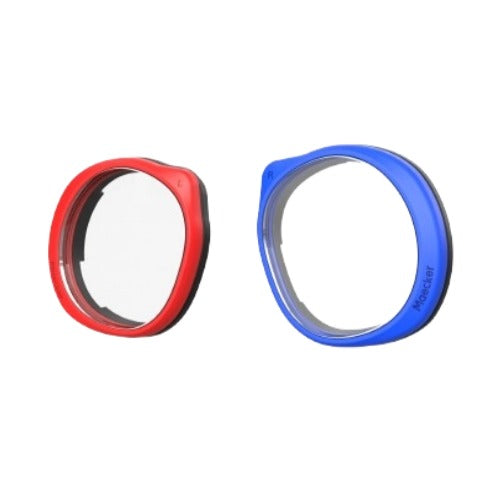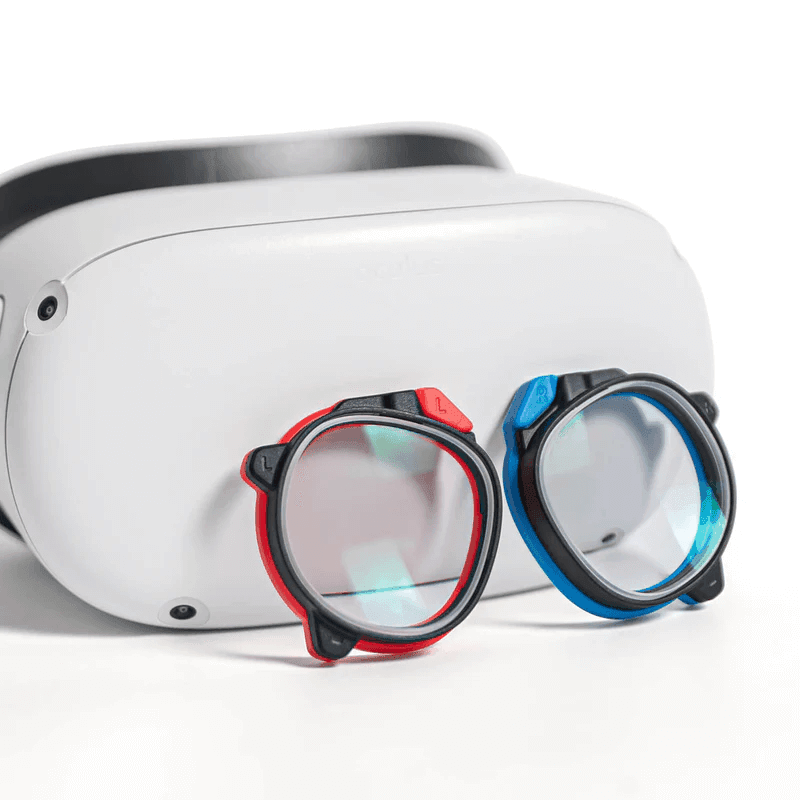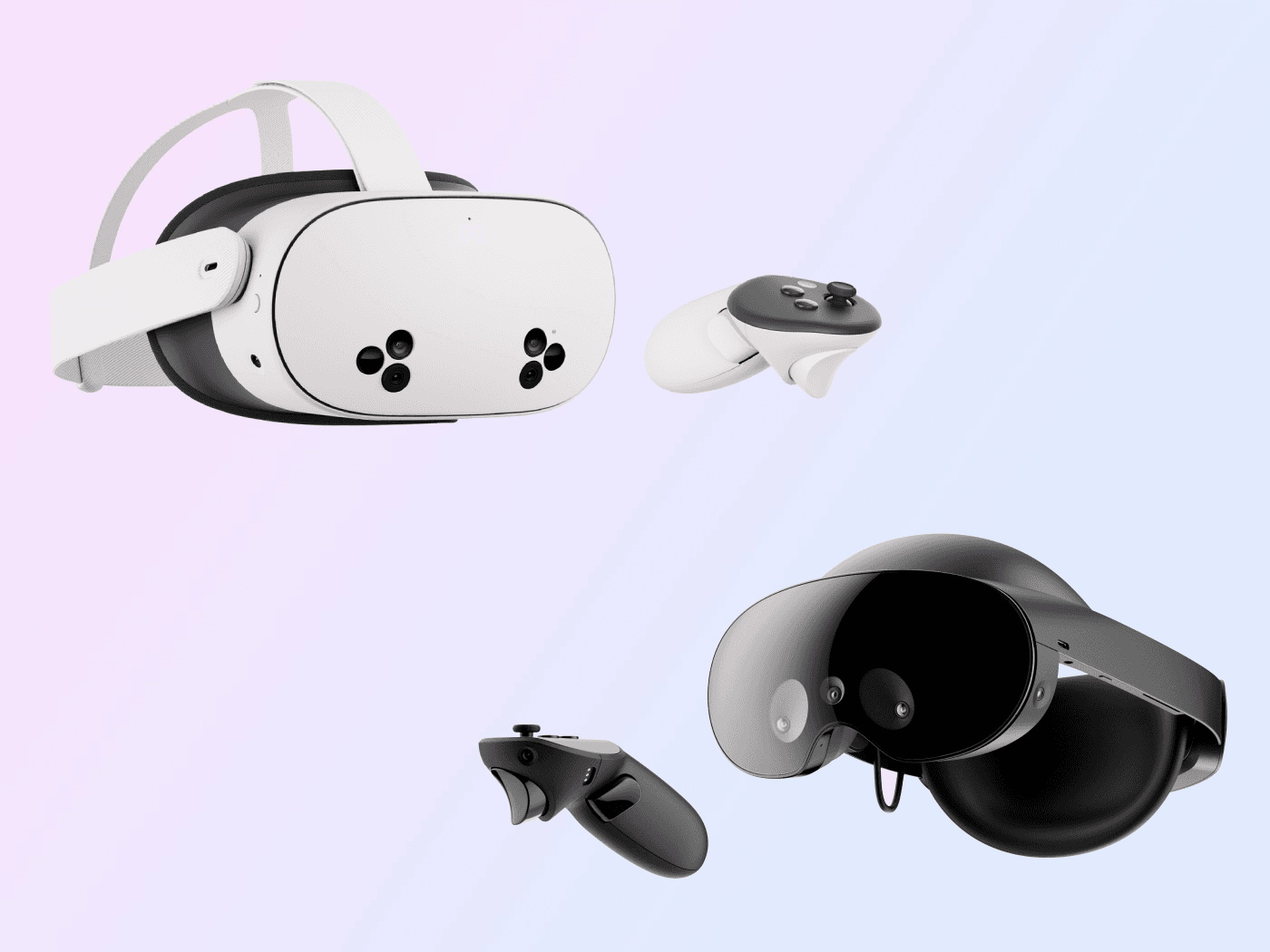Virtual reality technology continues to evolve, offering new features and improved experiences. Meta has been at the forefront of this trend, with headsets like the Meta Quest 3S and Meta Quest Pro. While both devices offer cutting-edge capabilities, they cater to different users. Understanding their similarities and differences can help you choose the right one.
Design And Build Quality
The Meta Quest 3S and Meta Quest Pro differ significantly in design. The Quest 3S has a more budget-friendly design, maintaining a clean and functional look. Weighing just 514g, it’s light enough for long sessions without feeling heavy on your head.
The Fresnel lenses in the Quest 3S are a downgrade from the more advanced pancake lenses used in the Meta Quest Pro. Pancake lenses provide sharper, clearer visuals but are bulkier, which makes the Quest Pro slightly heavier at 722g.
The Meta Quest Pro is designed with professionals in mind, offering a sleeker and more premium feel. Its head strap is well-padded, and the battery is built into the rear to better distribute the weight.
This makes the headset more comfortable for extended use compared to the Quest 3S. However, the Pro’s overall bulk and added weight can make it more cumbersome for casual users, especially during long VR sessions.
Comfort is important for a good VR experience and while both headsets perform well, the Quest 3S might be a more convenient choice for casual users due to its lightweight design. The Quest Pro’s build is clearly aimed at professionals who might prioritize a secure, professional feel over lightweight convenience.
Visuals And Display
The resolution in both headsets is close but not quite the same. The Meta Quest Pro offers 1920 x 1800 pixels per eye, delivering crisp visuals, especially when paired with its local dimming backlight system. This feature enhances contrast and provides deeper blacks, making visuals more immersive.
The Quest 3S, on the other hand, provides 1832 x 1920 pixels per eye, which is slightly lower but still quite impressive for a budget headset. Although the resolution difference is not huge, the color contrast on the Quest Pro gives it the edge, offering richer colors.
Field of view (FOV) is another factor where the Quest Pro takes the lead, providing a wider 96-degree horizontal and 90-degree vertical FOV. The Quest 3S is a little narrower, but still delivers a solid immersive experience.
The refresh rate on the Quest 3S stands at 120Hz, which is fixed, while the Pro offers 90Hz, potentially less smooth for fast-paced VR games. However, users will appreciate that the Pro’s visuals still feel rich and smooth, especially for enterprise-level applications where image fidelity is prioritized over speed.
Performance And Hardware
The performance of both headsets is powered by the Qualcomm Snapdragon XR2 processor. However, the Meta Quest Pro comes with an enhanced Snapdragon XR2+, which provides 50% more power compared to the regular XR2 in the Quest 3S. This boost makes the Quest Pro more suited for enterprise tasks, AR applications, and more demanding VR experiences.
With 12GB of RAM, it also has the upper hand over the 8GB in the Quest 3S. This extra RAM is especially noticeable when multitasking, making the Pro better for work-related tasks.
In terms of storage, the Meta Quest 3S offers two configurations: 125GB or 256GB, while the Quest Pro comes with a standard 256GB. This difference could be important for users who store a lot of VR apps and games.
Although the Quest 3S has enough power for most casual and gaming VR experiences, professionals looking to push the limits of VR and mixed reality would likely prefer the extra horsepower of the Quest Pro.
Battery Life
One of the significant differences between the two headsets is battery life. The Meta Quest 3S boasts up to 2.5 hours of battery life, a slight improvement over the Quest Pro’s two-hour runtime.
For casual VR gamers or short mixed reality experiences, both headsets offer sufficient usage time but professionals may find themselves needing to recharge the Quest Pro more frequently during work sessions.
The charging experience on both devices is also different. The Quest Pro comes with a charging cradle for both the headset and controllers while the Quest 3S uses a more standard charging setup.
Controllers And Tracking
Both the Meta Quest 3S and Quest Pro feature motion controllers that support hand-tracking. However, the Pro’s controllers are more advanced, featuring three built-in cameras that independently track movement, rather than relying on the headset’s sensors.
This provides smoother and more accurate tracking. The Quest 3S controllers, while capable, are more basic in comparison, using the more traditional tracking system found in earlier models.
Another key feature the Quest Pro offers is eye and face tracking, which enhances the interaction in virtual spaces. This feature allows for more natural communication, particularly in work-related VR settings.
Unfortunately, the Quest 3S lacks this level of sophistication, as it doesn’t include depth sensors or eye-tracking capabilities. The Quest Pro’s advanced tracking makes it ideal for those who need precision and realism in VR interactions.
Mixed Reality Capabilities
Both headsets support full-color passthrough, but the experience varies. The Meta Quest Pro includes a depth sensor which enhances mixed reality experiences by better understanding the surrounding space.
This makes the Pro more accurate in blending virtual objects with real-world environments, important for professional MR applications. The Meta Quest 3S, while offering color passthrough, lacks a depth sensor, making its MR features a bit less intuitive and potentially less immersive for advanced mixed reality uses.
However, for basic MR applications like placing virtual objects in your living space, the Quest 3S still offers a satisfying experience. It remains a strong contender for users looking for casual mixed reality features without needing the high-level accuracy provided by the Quest Pro.
Price And Value
The most significant difference between the two headsets is their price. The Meta Quest 3S is priced at $299 for the 128GB version, making it one of the most affordable options for VR enthusiasts.
On the other hand, the Meta Quest Pro comes with a hefty price tag of $999, reflecting its advanced features and professional focus. For most consumers, the Quest 3S offers an excellent VR experience at a fraction of the cost. However, for professionals or businesses needing the advanced features of the Quest Pro, the extra investment may be worth it.’
Table of Comparison: Meta Quest 3S vs. Meta Quest Pro
|
Feature |
Meta Quest 3S |
Meta Quest Pro |
|
Display Type |
LCD |
Mini LED + Quantum Dot |
|
Resolution |
2064 x 2208 per eye |
1800 x 1920 per eye |
|
Refresh Rate |
Up to 120 Hz |
Up to 90 Hz |
|
Field of View (FOV) |
~110 degrees |
~106 degrees |
|
Processor |
Qualcomm Snapdragon XR2 Gen 2 |
Qualcomm Snapdragon XR2+ Gen 1 |
|
RAM |
8 GB |
12 GB |
|
Storage Options |
128 GB, 256 GB |
256 GB |
|
Controller Type |
Touch Pro controllers |
Touch Pro controllers with haptics |
|
Battery Life (Headset) |
Up to 2.5 hours |
Up to 2 hours |
|
Weight |
~503g |
~722g |
|
Tracking |
Inside-out 6DoF tracking |
Inside-out 6DoF tracking with face and eye tracking |
|
Mixed Reality Capabilities |
Color pass-through for mixed reality |
Full-color passthrough for advanced mixed reality |
|
Comfort |
Lightweight with soft straps |
Balanced design with better weight distribution |
|
Price |
Lower starting price (~$299) |
Higher price (~$999) |
|
Target Audience |
General VR users, gamers |
Professionals, advanced VR users |
Final Thoughts
The Meta Quest 3S and Meta Quest Pro serve different audiences. The Quest 3S is perfect for casual users and gamers looking for a great VR experience without breaking the bank. It offers solid performance, excellent display quality, and sufficient mixed reality features.
On the other hand, the Meta Quest Pro is aimed at professionals needing top-notch performance, advanced tracking, and superior mixed reality capabilities. While the price difference is significant, each headset brings its own strengths to the table. Understanding your specific needs will help you make the best decision between the two.
Recommended Meta Quest 3S Accessories
1. MaeckerVR Quest 3/3S Direct-Charge Controller Grips

